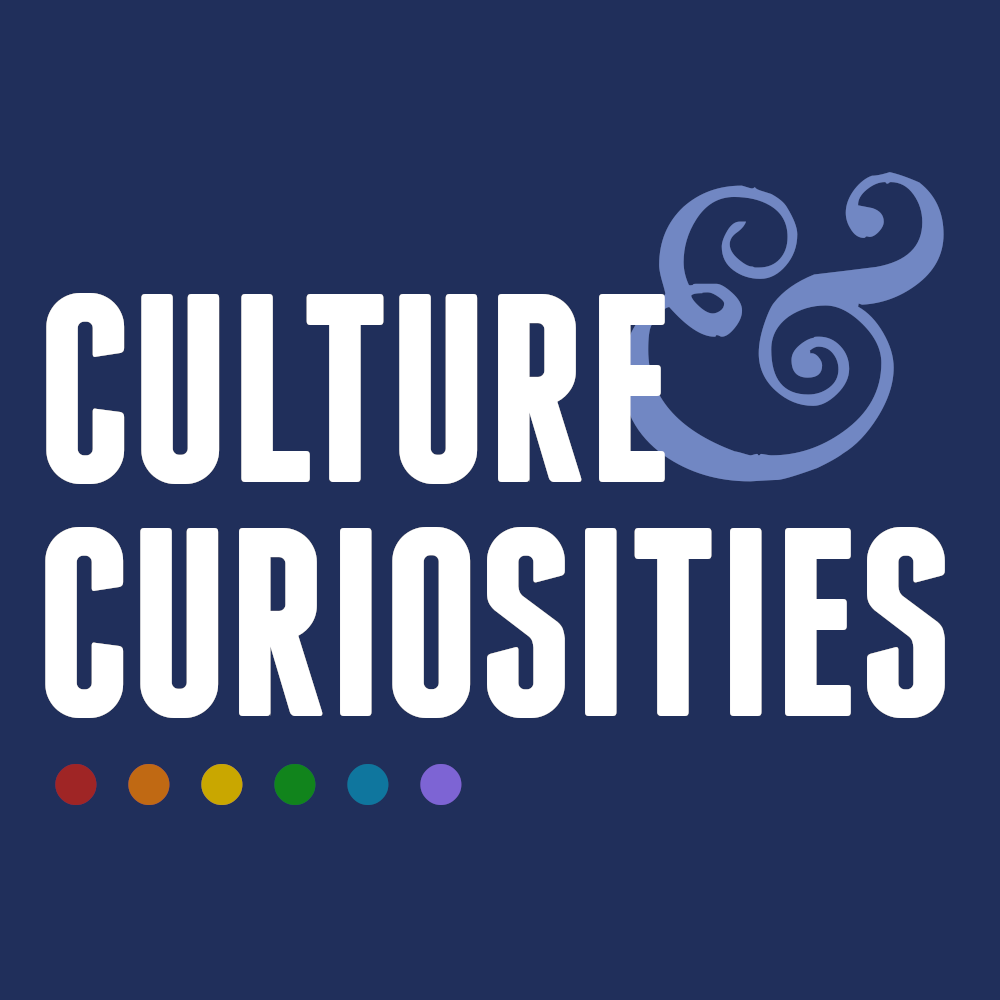|
Yesterday I wrote about the apparent glee with which ancient astronaut theorist, sexual fetishist, and murder victim Erik Poltorak seemed to long for the coming Day of Judgment when the aliens would punish humanity for its sins. This of course is not unique to Poltorak and has been a part and parcel of Western civilization since the apocalyptic cults of Judaism started prophesying the End Times. Nevertheless, we seem to be in another period of apocalyptic fantasizing, and once again this fills the hearts of believers with glee. Here is U.S. Rep. Michelle Bachmann telling an evangelical minister recently how she longs for the cleansing fires to burn across the earth:
30 Comments
How many times has Ancient Aliens plumbed the Anunnaki well? I’ve lost count, and I can’t imagine there is anything really new to say about a story concocted from Zecharia Sitchin’s fever dreams. All you really need to know about the Anunnaki is that they are vaguely-defined Mesopotamian deities who live both in heaven and under the earth and otherwise are most prominent in the Enuma Elish, where they build a still-extant Mesopotamian temple, the Esagila of Babylon, out of mud bricks and then complain to Marduk that it’s too much word making mud bricks—such great alien technology!
The premiere for American Templars, the movie based on the claim that Henry Sinclair reached America in 1398, occurred under the auspices of the Westford Historical Society the other day, and Newport Tower Museum curator Jim Egan was there, dressed like John Dee, to “raise awareness” of his belief that Gov. Benedict Arnold’s windmill was built not by Templar knights under Sinclair leadership but rather by John Dee. You really must click this link to see him in costume.
Since I reviewed the first two episodes of the BBC’s Atlantis, I figured I should give a brief notice to the third. British critics seem to agree that this episode was an improvement over the previous two, but I’m not convinced. In this outing, Jason and his friends get in more trouble with King Minos (who surely should be on better terms with them by now) and end up condemned to the bull ring where they must learn to leap over an angry bull or die trying. In the real world, there is no evidence that bull leaping—found widely in the Bronze Age Mediterranean world, but best known from Minoan Crete—was used as a punishment.
Scott Wolter made a big deal out of an alleged hand gesture he believes symbolizes membership in the cult of Mary Magdalene and the “monotheistic dualism” that celebrates the sacred feminine and venerates the genetic descendants of Jesus. This hand gesture, which is really nothing more than the natural position of a relaxed and extended hand, forms what Wolter sees as an “M” as seen in this painting of Christopher Columbus, a leading conspirator:
My brain is a little tired after going through the ridiculous claims in Scott Wolter’s new book. I’ll be honest: If Scott Wolter were not the host of a high-rated cable television show, his book would have ended up on my slush pile of delusional ravings that are simply too ridiculous and too free of evidence to warrant lengthy consideration. And yet, because he is on TV, many readers will take him seriously, Oreo cookie conspiracy and all. However, I today I’d like to talk about a few issues that came up in the course of reviewing it, most of which are not directly related to its claims.
• Part 1 • Part 2 • Part 3 • Part 4 •
Even though Scott Wolter’s Akhenaten to the Founding Fathers: Mysteries of the Hooked X® is a scant 298 pages—including index, notes, etc.—it has more than enough evidence-free claims to fill a book three times its size. It’s fortunate then that Wolter simply assumes we believe his assertions and does not attempt to explain his claims or weave them into a story. Had he done so, we might be looking at a book on the order of the Mahabharata in size. But what you really want to know about is the Oreo cookie conspiracy. You have to wait a bit. He makes it the nearly final revelation of his book. • Part 1 • Part 2 • Part 3 • Part 4 •
Do you remember the old Tootsie Roll jingle? Whatever it is I think I see / Becomes a Tootsie Roll to me. It seems that Scott Wolter has revised this somewhat: Whatever it is I think I see / Becomes a Templar conspiracy. At least that’s the lesson I’m taking away from Akhenaten to the Founding Fathers: Mysteries of the Hooked X®. The only other lesson I’ve gleaned so far comes from Wolter’s discussion of stone clitorises, buildings which symbolically orgasm, sunlight as divine penis, speculation on the Virgin Mary’s sex life, contemplation of trans-Atlantic couplings, and of course the “Hooked X®” as depicting the actual act of impregnation of Mary Magdalene. The man has sex on the brain and seems to have invented an entire Gnostic-Dualist sacred feminine ancient cult to justify his ideas about sexual liberation. As we enter the third part of this review, we turn to Native Americans, who, for the first time, come in for the full Wolter treatment. Because this chapter has the greatest concentration of new material, I will devote today’s entire review to it. • Part 1 • Part 2 • Part 3 • Part 4 • I was struck by the comments one reviewer of Malcolm Gladwell’s new book received blasting him for identifying problems with Gladwell’s glib rewriting of scientific fact. They are the same three criticisms I receive almost daily for critiquing Scott Wolter: (a) you are jealous of his success, (b) you are not qualified to judge his work, and (c) his work is meant as entertainment, so don’t take it seriously. Christopher Chabris makes a great point about Gladwell that equally applies to Wolter: He is saying that if you understand his topics well enough to see what is erroneous or missing, then you are not the reader he wants. At a stroke he has said that anyone equipped to critically review his work should not be reading it. I’ve received a few emails about Gavin Menzies’s new book, Who Discovered America? (William Morrow, 2013), which claims new evidence that the Chinese discovered America in 40,000 BCE and again in 1417. (This revises down the date from Menzies’s 2002 bestseller 1421: The Year China Discovered America). I have not read the book and therefore can’t comment on all of Menzies’s claims. However, as reported in The Daily Mail, the primary evidence he offers is the following map, which he claims is an eighteenth century copy of a 1417 original, based on a scholar’s assertion that the language used dates from the Ming Dynasty (1368-1644).
|
AuthorI am an author and researcher focusing on pop culture, science, and history. Bylines: New Republic, Esquire, Slate, etc. There's more about me in the About Jason tab. Newsletters
Enter your email below to subscribe to my newsletter for updates on my latest projects, blog posts, and activities, and subscribe to Culture & Curiosities, my Substack newsletter.
Categories
All
Terms & ConditionsPlease read all applicable terms and conditions before posting a comment on this blog. Posting a comment constitutes your agreement to abide by the terms and conditions linked herein.
Archives
April 2024
|
- Home
- Blog
- Books
-
Articles
-
Newsletter
>
- Television Reviews >
- Book Reviews
- Galleries >
- Videos
-
Collection: Ancient Alien Fraud
>
- Chariots of the Gods at 50
- Secret History of Ancient Astronauts
- Of Atlantis and Aliens
- Aliens and Ancient Texts
- Profiles in Ancient Astronautics >
- Blunders in the Sky
- The Case of the False Quotes
- Alternative Authors' Quote Fraud
- David Childress & the Aliens
- Faking Ancient Art in Uzbekistan
- Intimations of Persecution
- Zecharia Sitchin's World
- Jesus' Alien Ancestors?
- Extraterrestrial Evolution?
- Collection: Skeptic Magazine >
- Collection: Ancient History >
- Collection: The Lovecraft Legacy >
- Collection: UFOs >
- Scholomance: The Devil's School
- Prehistory of Chupacabra
- The Templars, the Holy Grail, & Henry Sinclair
- Magicians of the Gods Review
- The Curse of the Pharaohs
- The Antediluvian Pyramid Myth
- Whitewashing American Prehistory
- James Dean's Cursed Porsche
-
Newsletter
>
-
The Library
-
Ancient Mysteries
>
-
Ancient Texts
>
- Mesopotamian Texts >
-
Egyptian Texts
>
- The Shipwrecked Sailor
- Dream Stela of Thutmose IV
- The Papyrus of Ani
- Classical Accounts of the Pyramids
- Inventory Stela
- Manetho
- Eratosthenes' King List
- The Story of Setna
- Leon of Pella
- Diodorus on Egyptian History
- On Isis and Osiris
- Famine Stela
- Old Egyptian Chronicle
- The Book of Sothis
- Horapollo
- Al-Maqrizi's King List
- Teshub and the Dragon
- Hermetica >
- Hesiod's Theogony
- Periplus of Hanno
- Ctesias' Indica
- Sanchuniathon
- Sima Qian
- Syncellus's Enoch Fragments
- The Book of Enoch
- Slavonic Enoch
- Sepher Yetzirah
- Tacitus' Germania
- De Dea Syria
- Aelian's Various Histories
- Julius Africanus' Chronography
- Eusebius' Chronicle
- Chinese Accounts of Rome
- Ancient Chinese Automaton
- The Orphic Argonautica
- Fragments of Panodorus
- Annianus on the Watchers
- The Watchers and Antediluvian Wisdom
-
Medieval Texts
>
- Medieval Legends of Ancient Egypt >
- The Hunt for Noah's Ark
- Isidore of Seville
- Book of Liang: Fusang
- Agobard on Magonia
- Book of Thousands
- Voyage of Saint Brendan
- Power of Art and of Nature
- Travels of Sir John Mandeville
- Yazidi Revelation and Black Book
- Al-Biruni on the Great Flood
- Voyage of the Zeno Brothers
- The Kensington Runestone (Hoax)
- Islamic Discovery of America
- The Aztec Creation Myth
-
Lost Civilizations
>
-
Atlantis
>
- Plato's Atlantis Dialogues >
- Fragments on Atlantis
- Panchaea: The Other Atlantis
- Eumalos on Atlantis (Hoax)
- Gómara on Atlantis
- Sardinia and Atlantis
- Santorini and Atlantis
- The Mound Builders and Atlantis
- Donnelly's Atlantis
- Atlantis in Morocco
- Atlantis and the Sea Peoples
- W. Scott-Elliot >
- The Lost Atlantis
- Atlantis in Africa
- How I Found Atlantis (Hoax)
- Termier on Atlantis
- The Critias and Minoan Crete
- Rebuttal to Termier
- Further Responses to Termier
- Flinders Petrie on Atlantis
- Amazing New Light (Hoax)
- Lost Cities >
- OOPARTs
- Oronteus Finaeus Antarctica Map
- Caucasians in Panama
- Jefferson's Excavation
- Fictitious Discoveries in America
- Against Diffusionism
- Tunnels Under Peru
- The Parahyba Inscription (Hoax)
- Mound Builders
- Gunung Padang
- Tales of Enchanted Islands
- The 1907 Ancient World Map Hoax
- The 1909 Grand Canyon Hoax
- The Interglacial Period
- Solving Oak Island
-
Atlantis
>
- Religious Conspiracies >
-
Giants in the Earth
>
-
Fossil Origins of Myths
>
- Fossil Teeth and Bones of Elephants
- Fossil Elephants
- Fossil Bones of Teutobochus
- Fossil Mammoths and Giants
- Giants' Bones Dug Out of the Earth
- Fossils and the Supernatural
- Fossils, Myth, and Pseudo-History
- Man During the Stone Age
- Fossil Bones and Giants
- Mastodon, Mammoth, and Man
- American Elephant Myths
- The Mammoth and the Flood
- Fossils and Myth
- Fossil Origin of the Cyclops
- History of Paleontology
- Fragments on Giants
- Manichaean Book of Giants
- Geoffrey on British Giants
- Alfonso X's Hermetic History of Giants
- Boccaccio and the Fossil 'Giant'
- Book of Howth
- Purchas His Pilgrimage
- Edmond Temple's 1827 Giant Investigation
- The Giants of Sardinia
- Giants and the Sons of God
- The Magnetism of Evil
- Tertiary Giants
- Smithsonian Giant Reports
- Early American Giants
- The Giant of Coahuila
- Jewish Encyclopedia on Giants
- Index of Giants
- Newspaper Accounts of Giants
- Lanier's A Book of Giants
-
Fossil Origins of Myths
>
-
Science and History
>
- Halley on Noah's Comet
- The Newport Tower
- Iron: The Stone from Heaven
- Ararat and the Ark
- Pyramid Facts and Fancies
- Argonauts before Homer
- The Deluge
- Crown Prince Rudolf on the Pyramids
- Old Mythology in New Apparel
- Blavatsky on Dinosaurs
- Teddy Roosevelt on Bigfoot
- Devil Worship in France
- Maspero's Review of Akhbar al-zaman
- The Holy Grail as Lucifer's Crown Jewel
- The Mutinous Sea
- The Rock Wall of Rockwall
- Fabulous Zoology
- The Origins of Talos
- Mexican Mythology
- Chinese Pyramids
- Maqrizi's Names of the Pharaohs
-
Extreme History
>
- Roman Empire Hoax
- American Antiquities
- American Cataclysms
- England, the Remnant of Judah
- Historical Chronology of the Mexicans
- Maspero on the Predynastic Sphinx
- Vestiges of the Mayas
- Ragnarok: The Age of Fire and Gravel
- Origins of the Egyptian People
- The Secret Doctrine >
- Phoenicians in America
- The Electric Ark
- Traces of European Influence
- Prince Henry Sinclair
- Pyramid Prophecies
- Templars of Ancient Mexico
- Chronology and the "Riddle of the Sphinx"
- The Faith of Ancient Egypt
- Remarkable Discoveries Within the Sphinx (Hoax)
- Spirit of the Hour in Archaeology
- Book of the Damned
- Great Pyramid As Noah's Ark
- Richard Shaver's Proofs
-
Ancient Texts
>
-
Alien Encounters
>
-
US Government Ancient Astronaut Files
>
- Fortean Society and Columbus
- Inquiry into Shaver and Palmer
- The Skyfort Document
- Whirling Wheels
- Denver Ancient Astronaut Lecture
- Soviet Search for Lemuria
- Visitors from Outer Space
- Unidentified Flying Objects (Abstract)
- "Flying Saucers"? They're a Myth
- UFO Hypothesis Survival Questions
- Air Force Academy UFO Textbook
- The Condon Report on Ancient Astronauts
- Atlantis Discovery Telegrams
- Ancient Astronaut Society Telegram
- Noah's Ark Cables
- The Von Daniken Letter
- CIA Psychic Probe of Ancient Mars
- Scott Wolter Lawsuit
- UFOs in Ancient China
- CIA Report on Noah's Ark
- CIA Noah's Ark Memos
- Congressional Ancient Aliens Testimony
- Ancient Astronaut and Nibiru Email
- Congressional Ancient Mars Hearing
- House UFO Hearing
- Ancient Extraterrestrials >
- A Message from Mars
- Saucer Mystery Solved?
- Orville Wright on UFOs
- Interdimensional Flying Saucers
- Flying Saucers Are Real
- Report on UFOs
-
US Government Ancient Astronaut Files
>
-
The Supernatural
>
- The Devils of Loudun
- Sublime and Beautiful
- Voltaire on Vampires
- Demonology and Witchcraft
- Thaumaturgia
- Bulgarian Vampires
- Religion and Evolution
- Transylvanian Superstitions
- Defining a Zombie
- Dread of the Supernatural
- Vampires
- Werewolves and Vampires and Ghouls
- Science and Fairy Stories
- The Cursed Car
-
Classic Fiction
>
- Lucian's True History
- Some Words with a Mummy
- The Coming Race
- King Solomon's Mines
- An Inhabitant of Carcosa
- The Xipéhuz
- Lot No. 249
- The Novel of the Black Seal
- The Island of Doctor Moreau
- Pharaoh's Curse
- Edison's Conquest of Mars
- The Lost Continent
- Count Magnus
- The Mysterious Stranger
- The Wendigo
- Sredni Vashtar
- The Lost World
- The Red One
- H. P. Lovecraft >
- The Skeptical Poltergeist
- The Corpse on the Grating
- The Second Satellite
- Queen of the Black Coast
- A Martian Odyssey
- Classic Genre Movies
-
Miscellaneous Documents
>
- The Balloon-Hoax
- A Problem in Greek Ethics
- The Migration of Symbols
- The Gospel of Intensity
- De Profundis
- The Life and Death of Crown Prince Rudolf
- The Bathtub Hoax
- Crown Prince Rudolf's Letters
- Position of Viking Women
- Employment of Homosexuals
- James Dean's Scrapbook
- James Dean's Love Letters
- The Amazing James Dean Hoax!
- James Dean, The Human Ashtray
- Free Classic Pseudohistory eBooks
-
Ancient Mysteries
>
- About Jason
- Search
© 2010-2024 Jason Colavito. All rights reserved.




 RSS Feed
RSS Feed
